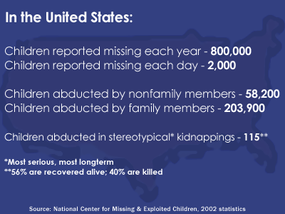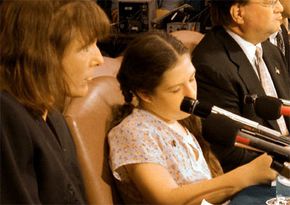
A child being kidnapped is a parent's worst nightmare. However, it is a reality that thousands of parents must face each year. In the United States, nearly 800,000 children are reported missing each year, or about 2,000 per day, according to the U.S. Department of Justice's Office of Juvenile Justice and Delinquency Prevention. Approximately one-third of the children reported missing have been kidnapped, and about one-fifth of those kidnapped children have been taken by nonfamily members.
In response to this tragic problem, many states have established a missing-child response network, commonly called AMBER, which is used to notify the public when a child is abducted. AMBER (America's Missing: Broadcast Emergency Response) is a program that comprises law enforcement, radio and television media, and a network of electronic highway signs.
Advertisement
In this article, you will learn how this program was developed, how it is used in the recovery of missing children, and about the new legislation that is making AMBER a national program.

The AMBER Alert is a lasting tribute to a young girl from Arlington, Texas, who was kidnapped and later killed in 1996. Amber Hagerman, who was 9 years old at the time, was riding her bike when a neighbor heard a scream. The neighbor ran out and saw a man pull Amber off of her bike, throw her into the front seat of his truck and drive away.

Four days later, Amber's body was found in a drainage ditch 4 miles from her house. Her kidnapping and murder remain unsolved.
Amber's death provoked an outcry in the Dallas/Fort Worth area, which prompted the Dallas/Fort Worth Association of Radio Managers to implement a method of quickly alerting the public, media, and police when a child is kidnapped. That plan, which was the original AMBER Alert plan, called for alerts to be broadcast whenever a child was abducted. In July 1997, radio stations began broadcasting the alerts. Television stations began announcing the alerts in 1999.
Advertisement




